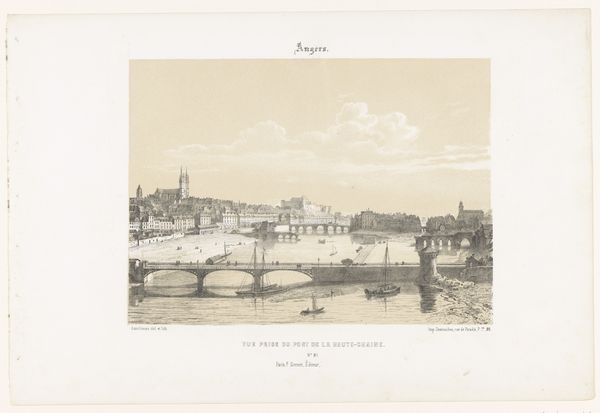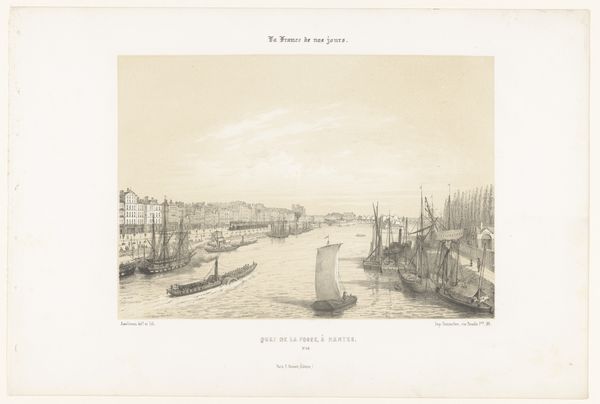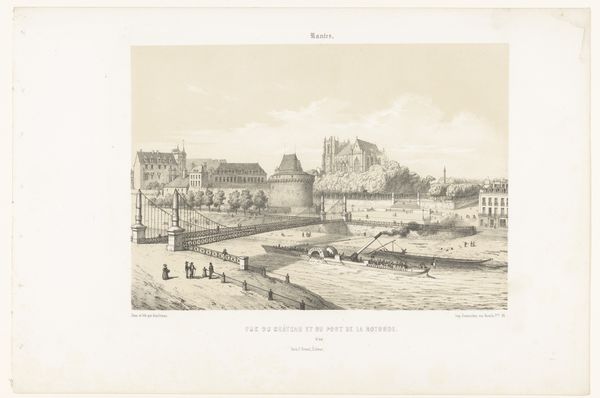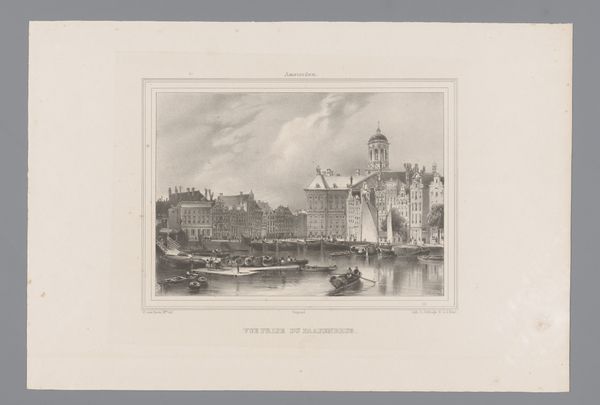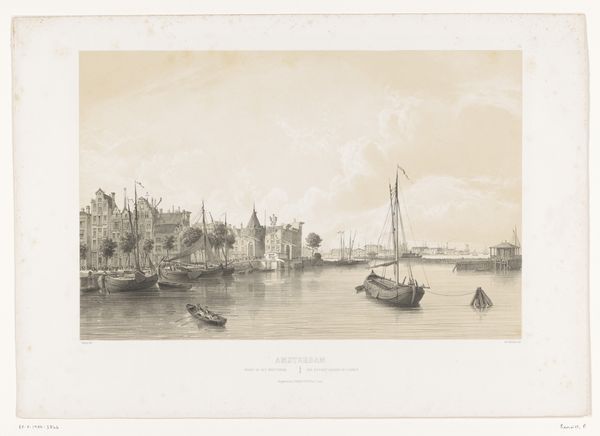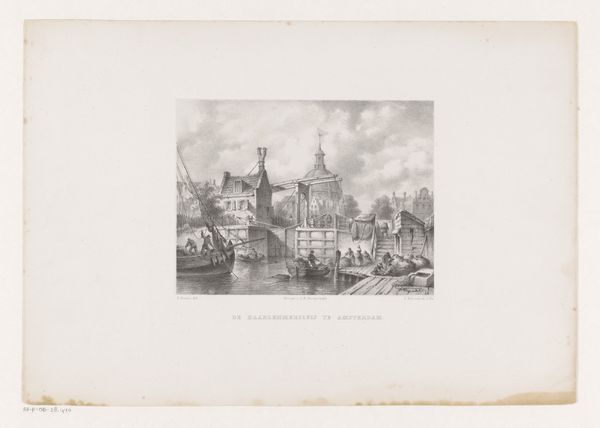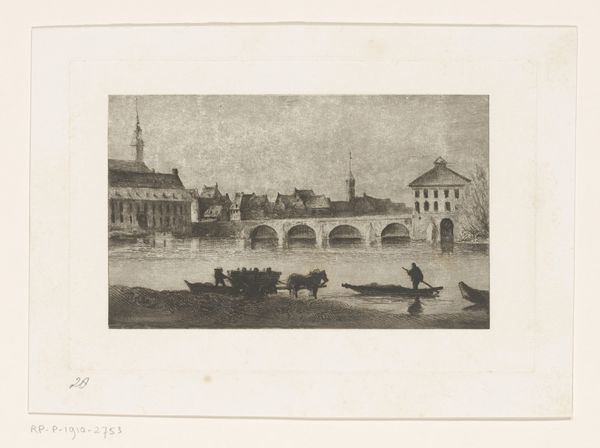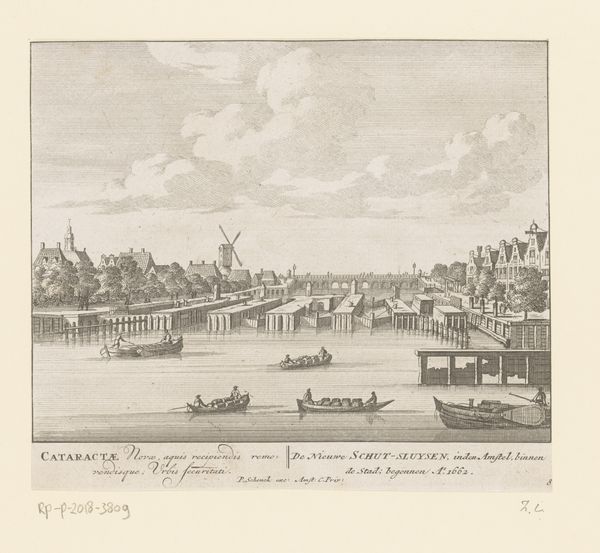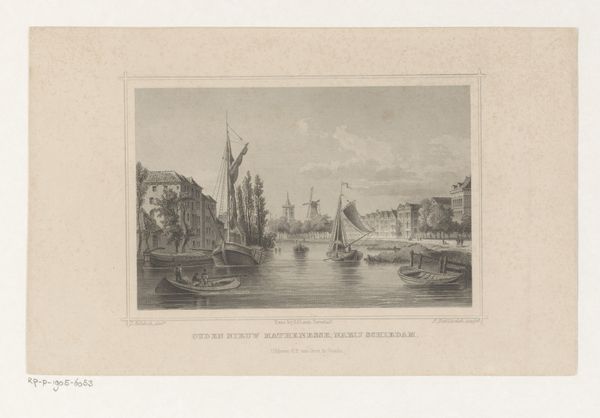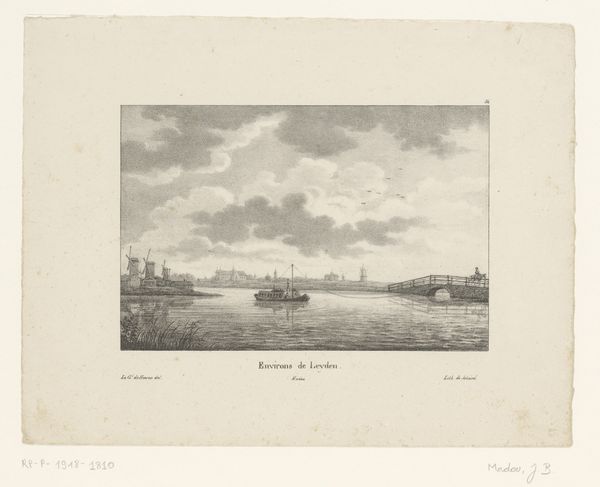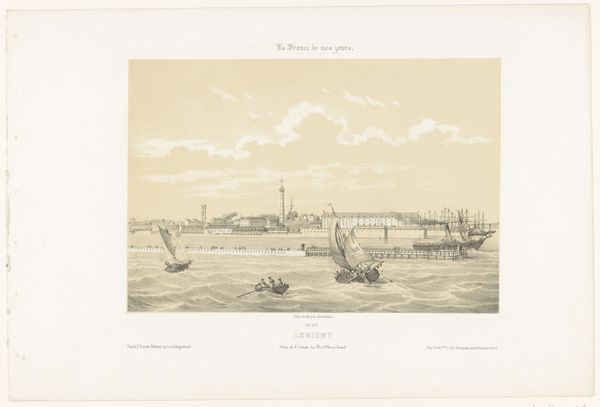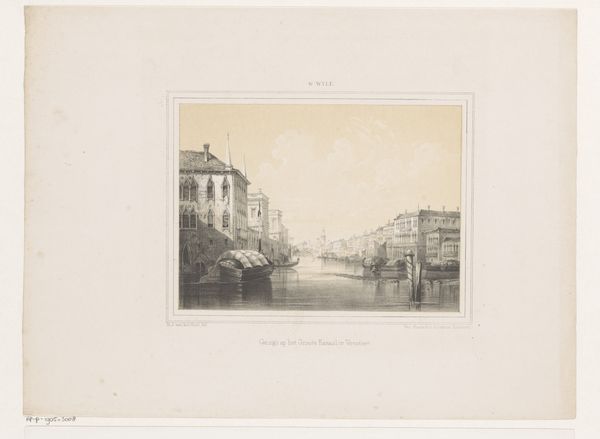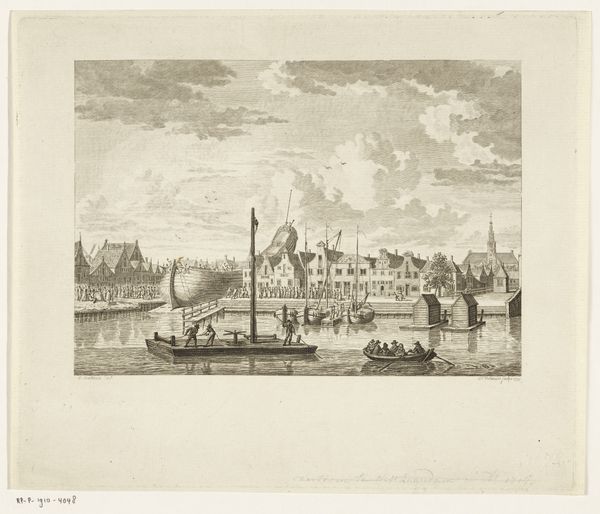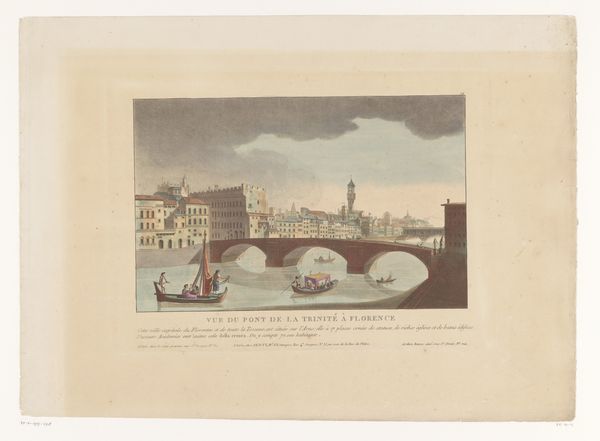
Zicht op de vishal in Nantes vanaf de aanlegsteiger 1853 - 1856
0:00
0:00
leonaugusteasselineau
Rijksmuseum
Dimensions: height 291 mm, width 434 mm
Copyright: Rijks Museum: Open Domain
Curator: This is Léon Auguste Asselineau's "View of the Fish Hall in Nantes from the Landing Stage," an etching from the mid-1850s, held at the Rijksmuseum. It's such a finely detailed piece, isn't it? What strikes you initially about it? Editor: It's fascinating how much detail Asselineau achieves with etching. I'm drawn to the activity on the waterfront; the people loading and unloading, the variety of boats… How does this depiction of everyday life tie into the broader artistic movements of the time? Curator: Well, let’s consider the labor embedded within this “everyday” scene. Romanticism often idealized nature, but here, Asselineau directs our attention to the bustling activity surrounding the fish hall—a site of intense labor. This connects with a burgeoning Realist interest in representing the lives of ordinary people, but I'd also suggest viewing it through the lens of emerging capitalist economies. Notice how the etching technique itself, as a form of mass production, mirrors the commercial activity it portrays. What do you make of that relationship? Editor: That’s a really interesting point. So the *means* of producing the image is in conversation with the image’s *subject*, the marketplace. Curator: Precisely. And think about who this print would have been *for*. Etchings like this democratized art, making it accessible to a wider consuming public beyond the elite circles who could afford paintings. The subject matter is directly tied to the intended audience, no? What are your thoughts? Editor: I hadn't considered the commercial aspect of printmaking like that. It reframes my understanding entirely. Seeing it as a commentary on labor, both within the image and in its creation, reveals so much more depth than just a simple cityscape. Curator: Exactly! The material realities of production and consumption are crucial to understanding its impact and relevance, wouldn't you agree? Editor: Absolutely! Now I see the image’s connections to society and technology; it’s more than just a pretty picture. Thanks!
Comments
No comments
Be the first to comment and join the conversation on the ultimate creative platform.
